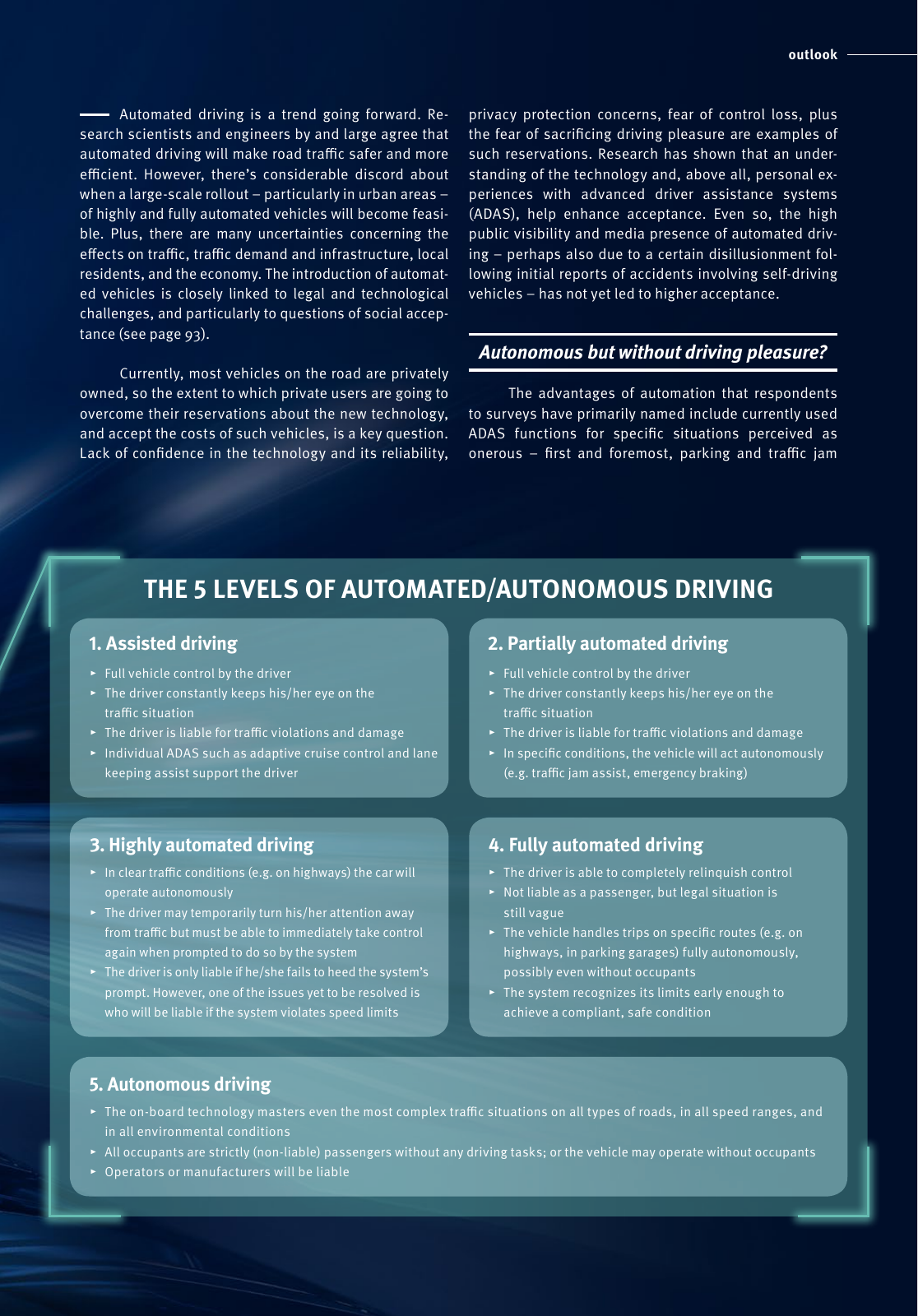Automated driving is a trend going forward Re search scientists and engineers by and large agree that automated driving will make road traffic safer and more efficient However there s considerable discord about when a large scale rollout particularly in urban areas of highly and fully automated vehicles will become feasi ble Plus there are many uncertainties concerning the effects on traffic traffic demand and infrastructure local residents and the economy The introduction of automat ed vehicles is closely linked to legal and technological challenges and particularly to questions of social accep tance see page 93 Currently most vehicles on the road are privately owned so the extent to which private users are going to overcome their reservations about the new technology and accept the costs of such vehicles is a key question Lack of confidence in the technology and its reliability privacy protection concerns fear of control loss plus the fear of sacrificing driving pleasure are examples of such reservations Research has shown that an under standing of the technology and above all personal ex periences with advanced driver assistance systems ADAS help enhance acceptance Even so the high public visibility and media presence of automated driv ing perhaps also due to a certain disillusionment fol lowing initial reports of accidents involving self driving vehicles has not yet led to higher acceptance Autonomous but without driving pleasure The advantages of automation that respondents to surveys have primarily named include currently used ADAS functions for specific situations perceived as onerous first and foremost parking and traffic jam 1 Assisted driving Full vehicle control by the driver The driver constantly keeps his her eye on the traffic situation The driver is liable for traffic violations and damage Individual ADAS such as adaptive cruise control and lane keeping assist support the driver 3 Highly automated driving In clear traffic conditions e g on highways the car will operate autonomously The driver may temporarily turn his her attention away from traffic but must be able to immediately take control again when prompted to do so by the system The driver is only liable if he she fails to heed the system s prompt However one of the issues yet to be resolved is who will be liable if the system violates speed limits 5 Autonomous driving The on board technology masters even the most complex traffic situations on all types of roads in all speed ranges and in all environmental conditions All occupants are strictly non liable passengers without any driving tasks or the vehicle may operate without occupants Operators or manufacturers will be liable 2 Partially automated driving Full vehicle control by the driver The driver constantly keeps his her eye on the traffic situation The driver is liable for traffic violations and damage In specific conditions the vehicle will act autonomously e g traffic jam assist emergency braking 4 Fully automated driving The driver is able to completely relinquish control Not liable as a passenger but legal situation is still vague The vehicle handles trips on specific routes e g on highways in parking garages fully autonomously possibly even without occupants The system recognizes its limits early enough to achieve a compliant safe condition THE 5 LEVELS OF AUTOMATED AUTONOMOUS DRIVING outlook 91

Hinweis: Dies ist eine maschinenlesbare No-Flash Ansicht.
Klicken Sie hier um zur Online-Version zu gelangen.
Klicken Sie hier um zur Online-Version zu gelangen.